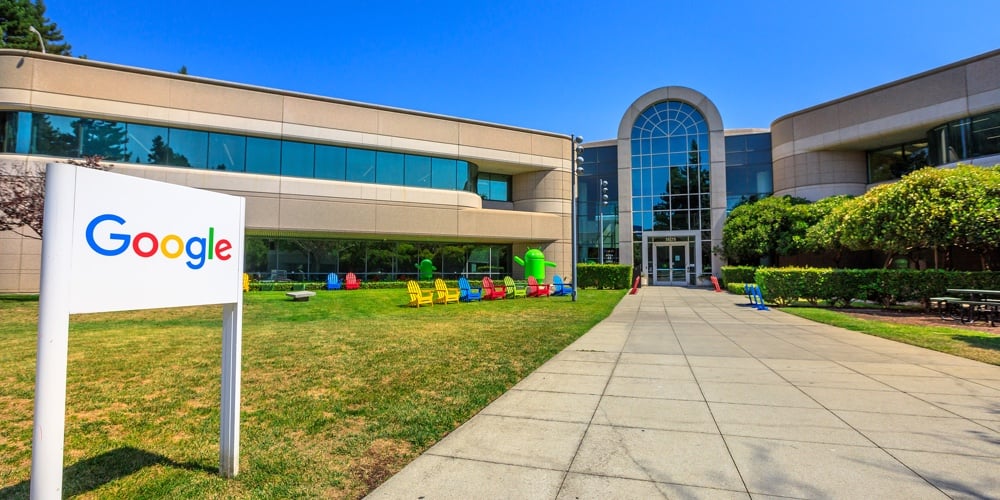The “Social Network” beckons to the “Financial Network”
Things have changed. The “Social Network” is coming after the “Financial Network.” What are credit unions going to do about it?

“Dateline November 13, 2019 SAN FRANCISO (Reuters) – Alphabet Inc’s (GOOGL.O) Google said on Wednesday it will offer personal checking accounts next year through its Google Pay app, initially in partnership with Citigroup Inc (C.N) and a small credit union at Stanford University. The project, codenamed Cache, comes as rivals Facebook Inc. and Apple Inc. are expanding their own efforts in consumer finance, a broad area that ranges from digital payment apps to bank accounts, brokerage accounts and loans, and which offer Silicon Valley new sources of revenue and new opportunities to strengthen ties with users. Google spokesman Craig Ewer said the company’s lead partners were Citi and Stanford Federal Credit Union and that more details would be known within months.”
“If we try to play like the Yankees in here, we will lose to the Yankees out there.”
I recently wrote about it here, and presented to a group of Credit Unions the idea that no matter how much work Credit Unions do to adopt technologies, reinvent member journeys, or analyze data, if their efforts are focused on competing with banking’s “Yankees” (Citigroup, JPMorganChase, BankofAmerica, etc) by adopting the competitive strategies of those “Yankees”, they will lose.
Credit Unions Must Find Their Own Way, Even When They Join the “Social Network.”
Reuters, in their report rightly noted that traditional banks (and Credit Unions, I might add) have long partnered with companies outside the industry to lure deposits or expand their loan books. But the move to partner with Google and others in the “social network/network platform” economy creates a challenge previously unseen by Credit Unions.
Technologists have been telling Credit Unions for years (I was one) that technology would enable competition and improve community-sized institutions’ abilities to compete with the largest players, the “Yankees” of our industry. And, to some degree, there was truth to this. Technology widened Credit Unions’ ability to distribute services, helping them to widen their geographic base, and potentially opening up a wider prospective audience for their services. But the gains are smaller than promised because Credit Unions’ adopted the technology but largely continued with their traditional business model and strategy, while mimicking many of the strategies of those large industry players.
The Social Network Became the Network Platform
Google, Amazon, Facebook, and Apple have become “GIANTS” in our economy. They dominate our lives in ways unimagined just a few short years ago. Debate all you want the value of this, or the rightness of this; but note the primary reason why they have succeeded to this degree.
Why did these companies grow so big, so fast? The reason, say economists, is simple, and it’s the same in all four cases: All of them benefited from the “network effect.” The network effect is the simple principle that the more members or users a social network has, the more attractive it becomes for other people to join as well, because the usefulness of the network goes up with the number of users.
And these networks have become, by tapping into the social networks they created, the platforms for a great deal of commerce in our economy, both online and offline, especially as online commerce has decimated offline commerce in a growing number of markets.
Companies large and small have found their way to do business in “partnership” with the large platform companies. But these partnerships are better understood as “playing the role of ‘provider’ in the network triangle of “consumers-network platforms-providers.” And this triangle, while creating new and attractive opportunities for both consumers and providers, has delivered monopoly-like benefits to the network platform companies. And what of the benefits to consumers and providers? Consumers have found the benefit of great access to providers (and also challenges working within the constraints of a monopoly-like channel), and providers have found both opportunity and challenges when joining the marketing and distribution channel of these network platforms.
The greatest challenge for providers “partnering” with the platforms has proven to be the difficulty of working within this business model. All providers, but especially smaller ones, often find it difficult to distinguish themselves and to profit from that distinction. This includes the competitive pricing challenge felt by smaller “partners” who lack the market presence, and customer volume, to maintain margins in this new marketing and distribution ecosystem. In other words, when you decide to play with the “big boys” size matters.
Mimicking the strategies and tactics of banking’s “Yankees” will not work and Credit Unions are about to find out why, in a big way.
Quotes included in the press release regarding Google’s move into checking accounts illustrate each party’s strategic focus and, to a degree, their relative position of power in this announced “partnership.”
The folks at Google wish to access the banking system, without taking on the expense burdens of joining it, in order to bring into their world another large component of our economy: “We’re exploring how we can partner with banks and credit unions in the U.S. to offer smart checking accounts through Google Pay, helping their customers benefit from useful insights and budgeting tools, while keeping their money in an FDIC or NCUA-insured account,” Ewer said in a statement, referring by acronym to two U.S. agencies that insure deposits.
To illustrate my point regarding “relative competitive strength” in this new “Financial Network”, Stanford Federal and Citi confirmed their roles and their strategies.
Citigroup, a “Yankee”, has the muscle to truly “partner” as a “provider” in the network model, and so they pursue “customer volume”: “This agreement has the potential to expand the reach and breadth of our customer base,” Citi spokeswoman Liz Fogarty said. “Privacy and transparency are, and will continue to be, critical priorities.”
Stanford FCU, on the other hand, pursues “relevancy”: Joan Opp, president and chief executive of Stanford Federal, described the deal as “critical to remaining relevant and meeting consumer expectations.”
“The Runt of the Litter, Dies”
So said Brad Pitt’s character, Billy Beane, in the movie “MoneyBall.” The film was inspired by a book that, by the way, was further titled “The Art of Winning an Unfair Game.”
I’m not here today to condemn the decision of Stanford FCU, nor to mock Ms. Opp’s comment. Far from it. I believe Stanford FCU is right to enter into this opportunity. But I also believe, as you can read above, that Credit Unions’ entry into the “network platform economy” is rife with challenges, not just opportunities. And I believe strongly that “remaining relevant and meeting consumer expectations” is a defensive posture that illustrates clearly the challenge confronting Credit Unions.
Credit Unions are the “runt of the litter” and cannot simply enter this space on the coattails of the industry’s largest teams. All evidence points to the grave threat these network platforms pose for each industry’s marginal players. And make no mistake, Credit Unions’ boats have risen with the tide, but they remain a small part of the broad financial marketplace. And it is this type of player who lacks the customer volume, economies of scale and capital to compete within the strictures of the system built and deployed by Google, Amazon and the others.
Credit Unions have to join this new economy, it is where future members reside.
Credit Union average membership continues to grow older and our younger generations are open to meeting their financial needs within the “social network” models they have adopted as “native” to their experience. So, Credit Unions have to go there, and I applaud Stanford FCU’s actions. But success, not survival, is contingent on the entire Credit Union movement defining a plan for success that is “fully different from” the efforts of the “Yankees”, the big banks. Do I know what that plan is? I do not. But I know it must be found (and we have to look everywhere, even at our FOMs’ internally and externally imposed constraints), for history has shown us, again and again, that you cannot win when playing an unfair game if you are going to follow the path of those who ante up with resources you can only imagine possessing.
Credit Union leaders need to recognize that Google’s announcement is a “call to arms”, one I’ve long expected. And we all need to think anew, think differently. I hope to talk with many others about this. I hope some of you have already started.





